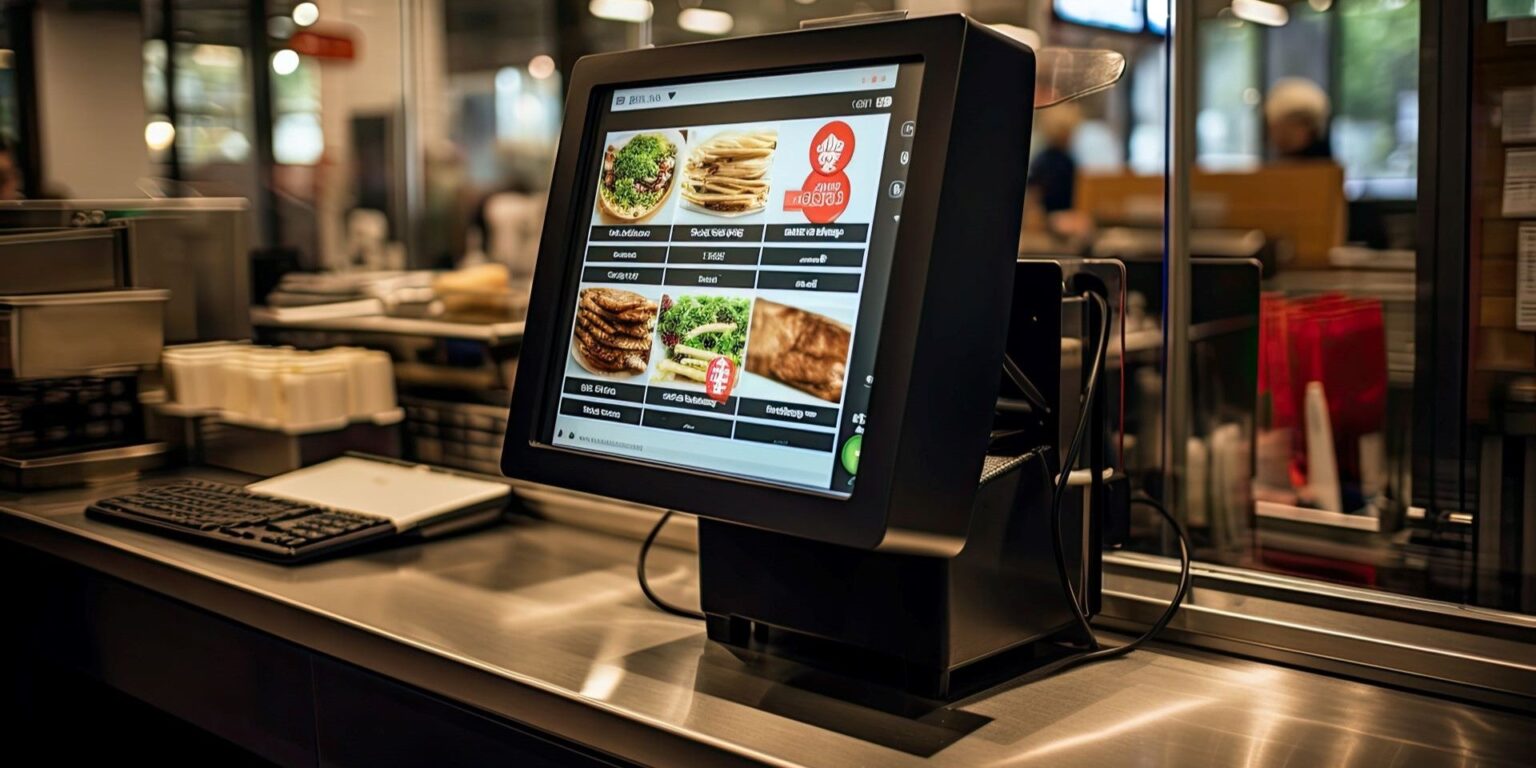Introduction
A reliable Point-of-Sale (POS) system is no longer just a tool for processing transactions—it has become the central hub for managing everything from orders and inventory to staff scheduling and customer engagement.
With the rise of cloud-based and AI-driven POS systems, restaurants now have access to powerful features that streamline operations and enhance the dining experience. But with so many options available, how do you determine which POS system is the best fit for your restaurant?
This guide provides more details here on the key criteria for selecting the right restaurant POS system, along with an in-depth analysis of the top contenders in 2024. We also take a closer look at Hashmato, a rising star in the industry, known for its AI-powered analytics, seamless online ordering, and customer loyalty management. Whether you run a small café, a full-service restaurant, or a multi-location chain, this article will help you find the ideal POS system to optimize operations and enhance customer satisfaction.
Why Do Restaurants Need a Reliable POS System?
A POS system is the backbone of restaurant operations. Gone are the days of handwritten orders and cash-only transactions—modern restaurants need speed, efficiency, and integration to keep up with customer expectations.
Real-World Scenario: The Impact of a Good POS System
Imagine running a busy fast-food joint during peak hours. Without a streamlined POS system, orders can pile up, leading to delays, mix-ups, and frustrated customers. But with an advanced POS, orders flow seamlessly from the counter to the kitchen, reducing errors and boosting customer satisfaction.
Similarly, for fine-dining restaurants, a POS with tableside ordering can speed up service and improve table turnover rates, resulting in higher revenue.
Now, let’s dive into the key criteria to consider when choosing the best POS system for your restaurant.
Key Criteria for Choosing the Best POS System for Restaurants
1. Ease of Use and Training
A restaurant POS should have an intuitive and user-friendly interface to reduce staff training time. An overly complicated system can slow down service and frustrate employees.
Look for:
- Touchscreen interface with quick navigation
- Easy menu modifications for custom orders
- Minimal training time for new hires
2. Hardware and Software Compatibility
Some POS providers offer all-in-one systems, while others allow restaurants to use their own hardware. It’s crucial to choose a POS that fits your existing setup.
Key considerations:
- Compatibility with tablets, terminals, and handheld devices
- Cloud-based vs. on-premise solutions
- Offline mode to process orders during internet outages
3. Speed and Performance
In a restaurant, every second counts. A slow POS system can lead to longer wait times and frustrated customers.
Features to look for:
- Lightning-fast transaction processing
- 99.9% uptime reliability
- Cloud backups to prevent data loss
4. Payment Processing Options
With customers preferring contactless and digital payments, a POS must support multiple payment options.
Important payment features:
- Credit/debit cards & mobile payments (Apple Pay, Google Pay)
- Split billing and tipping options
- Secure transactions with encryption
5. Inventory Management and Waste Reduction
A POS with inventory tracking can help restaurants monitor ingredient usage, reduce waste, and automate supply orders.
What to check:
- Real-time inventory updates
- Auto-restock notifications
- Integration with suppliers
6. Online Ordering and Delivery Integration
With the rise of food delivery services, restaurants need POS systems that sync with Uber Eats, DoorDash, and Grubhub.
Key benefits:
- Seamless online order processing
- Kitchen display integration for real-time updates
- Automated delivery tracking
7. Customer Relationship Management (CRM) & Loyalty Programs
Loyalty programs encourage repeat business. A good POS should offer CRM tools to track customer preferences and spending habits.
CRM essentials:
- Automated discounts & loyalty rewards
- Customer profiles with order history
- Email & SMS marketing tools
8. Pricing and Scalability
A restaurant POS should be affordable and scalable to grow with your business.
Key factors:
- Monthly subscription vs. one-time purchase
- Scalability for multiple locations
- No hidden fees for add-ons
Top Contenders: Best POS Systems for Restaurants in 2025
1. Hashmato – The Next-Gen POS Solution
Best for: Restaurants seeking an all-in-one POS with AI-powered analytics
Overview:
Hashmato is a modern and intuitive restaurant POS system designed for businesses looking to maximize efficiency, automate processes, and improve customer experiences. It integrates AI-driven analytics, seamless online ordering, and a robust CRM module, making it an excellent choice for both small and large restaurants.
Key Features:
- AI-powered analytics for sales forecasting
- Smart inventory tracking with waste reduction tools
- Integrated CRM with automated marketing campaigns
- Seamless third-party delivery app integration
- Offline mode for uninterrupted service
Ideal for: Full-service restaurants, quick-service chains, and cloud kitchens
2. Square for Restaurants – Best for Small Cafés & Startups
Best for: Budget-conscious restaurants needing a simple, efficient POS
Overview:
Square for Restaurants is a user-friendly POS solution with a free basic plan, making it ideal for new businesses. It offers customizable menus, fast transactions, and online ordering integration.
Key Features:
- Touchscreen ordering system
- Built-in payment processing (Square Payments)
- Free basic plan for startups
- Inventory & sales reporting
Ideal for: Small cafés, food trucks, and independent restaurants
3. Toast POS – Best for Full-Service Restaurants
Best for: Sit-down restaurants with tableside ordering needs
Overview:
Toast POS is tailored for full-service dining, allowing tableside ordering and real-time kitchen communication. It includes advanced analytics to track performance and optimize restaurant operations.
Key Features:
- Tableside ordering with handheld devices
- Integrated online ordering system
- Real-time sales & performance reports
- Employee scheduling & payroll management
Ideal for: Full-service restaurants and casual dining chains
4. Clover POS – Best for Quick-Service Restaurants
Best for: Fast-paced restaurants needing customizable hardware & software
Overview:
Clover POS is a fully customizable system that works for both counter-service and dine-in restaurants. It offers flexible hardware setups, from portable devices to full touchscreen stations.
Key Features:
- Fully customizable interface
- Kitchen display system for streamlined orders
- Built-in loyalty and rewards programs
- Works offline during internet outages
Ideal for: Quick-service restaurants, pizza shops, and food trucks
5. Lightspeed Restaurant POS – Best for Multi-Location Chains
Best for: Restaurants with multiple locations needing cloud-based management
Overview:
Lightspeed POS offers real-time inventory updates, automated reports, and cloud-based access for restaurants with multiple branches.
Key Features:
- Cloud-based management with remote access
- Menu optimization tools
- Advanced staff management & scheduling
- Multi-location reporting dashboard
Ideal for: Multi-location restaurants, franchises, and high-volume eateries
6. Revel Systems POS – Best for Enterprise-Level Restaurants
Best for: Large-scale operations requiring enterprise-grade software
Overview:
Revel Systems is a comprehensive, cloud-based POS designed for high-volume restaurants, stadiums, and large franchises.
Key Features:
- Enterprise-grade analytics & reporting
- Customizable dashboards
- Employee management & scheduling
- Customer loyalty program integration
Ideal for: Large restaurant chains and high-volume businesses
Common Mistakes to Avoid When Choosing a POS System
Selecting the wrong Point-of-Sale (POS) system can lead to operational inefficiencies, higher costs, and customer dissatisfaction. To prevent costly mistakes, here are some of the most common pitfalls restaurant owners should avoid:
1. Ignoring Future Scalability
Many restaurants choose a POS system that works for their current needs but fails to support future growth. As your business expands, you may need features like:
- Multi-location management
- Advanced reporting & analytics
- Integration with new delivery platforms
Solution: Choose a scalable POS that can grow with your restaurant.
2. Overlooking Integration Capabilities
A POS system should seamlessly connect with other essential tools like:
- Accounting software (QuickBooks, Xero, etc.)
- Online ordering platforms (Uber Eats, DoorDash, etc.)
- Inventory management systems
Solution: Ensure the POS supports third-party integrations to avoid manual work and inefficiencies.
3. Focusing Only on Cost and Not on Features
Many restaurant owners opt for the cheapest POS system without considering essential features like:
- Table management
- Customer loyalty programs
- Mobile ordering and self-service kiosks
Solution: Look for a balance between affordability and functionality to ensure long-term value.
4. Choosing a POS with Poor Customer Support
A system crash during peak hours can be disastrous if customer support is slow or unresponsive.
Solution: Choose a POS provider with 24/7 customer support and fast response times.
5. Not Testing User-Friendliness Before Purchase
A POS should be easy for staff to navigate. A complex system can lead to:
- Slower service times
- Increased staff training costs
- Order errors
Solution: Request a demo or free trial before committing to a POS system.
6. Ignoring Security and Compliance Standards
A POS system handles sensitive customer data, so security breaches can be costly.
Solution: Ensure the POS offers:
- End-to-end encryption
- PCI compliance
- Multi-factor authentication for staff
Future Trends in Restaurant POS Technology
1. AI-Powered POS Systems
AI is helping predict customer preferences, automate menu suggestions, and detect fraud in transactions.
2. Blockchain-Based Payment Systems
Cryptocurrency adoption is increasing, with POS systems integrating blockchain for secure and decentralized payments.
3. Self-Service Kiosks & Contactless Ordering
More restaurants are adopting self-service kiosks to reduce wait times and enhance customer experience.
Conclusion
A well-chosen POS system can streamline operations, enhance customer experience, and boost profits. Whether you’re a small café or a multi-location chain, the right POS should be fast, reliable, scalable, and affordable.
If you’re still unsure, check Hashmato reviews and explore real customer feedback on how modern POS solutions impact restaurant operations. A smart POS investment today can ensure long-term success in the competitive restaurant industry.

















